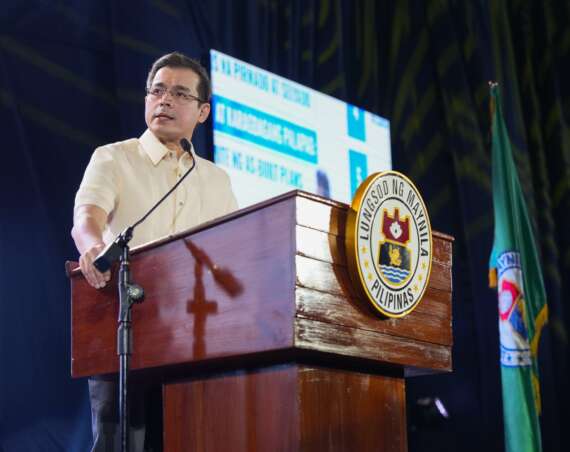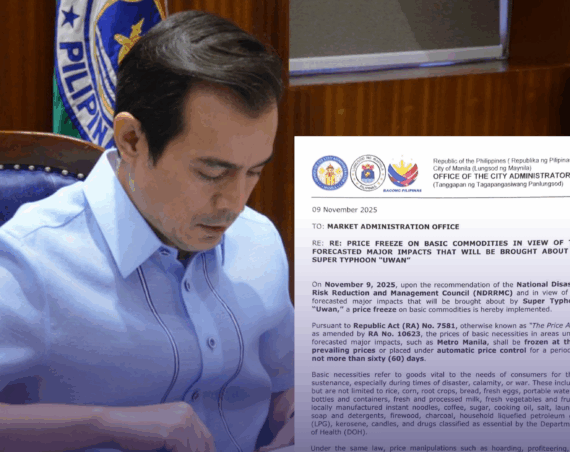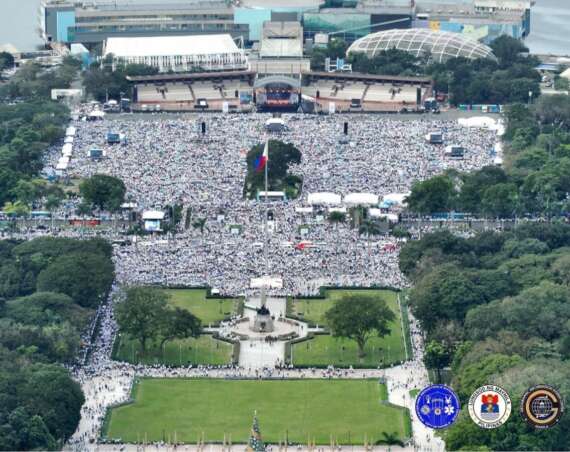Science Secretary Renato U. Solidum Jr. on Saturday, October 25, called on city officials of Manila to strengthen disaster imagination and readiness instead of fear, saying that effective preparation is the best defense against a large-magnitude earthquake such as “The Big One.”
Speaking during his keynote session “The Big One: What LGU Manila Needs to Know” at the opening of the Executive Course on the Incident Command System, Solidum said preparedness must begin with knowledge, coordination, and empowerment at every level of local governance.
He also warned that the Manila Trench—an active plate boundary west of Luzon capable of generating earthquakes as strong as magnitude 8.5 to 9.0—remains one of the most serious offshore threats, with a possible tsunami reaching the city’s coast within an hour of impact.
The executive course gathered city department heads, hospital directors, police station commanders, and the District Director of the Manila Police District.
It is being held a month ahead of the city-wide simultaneous earthquake drills ordered by Mayor Francisco “Isko” Moreno Domagoso during the 1st City Development Council Meeting—part of Manila’s disaster resilience efforts under the Make Manila Great Again development framework.
“What we need to do is really prepare,” Solidum told participants. “We need to empower you, and the people below you, so they can find the most appropriate solutions in your areas.”
He noted that the Philippines is “a seismically active country,” where multiple faults, some long inactive, still pose serious risks that require both scientific understanding and local action.
Solidum explained that while Manila is not located directly above an active fault, its soft soil composition makes it prone to intense ground shaking.
“If the West Valley Fault moves with a magnitude 7.2 earthquake, Manila may experience Intensity 8 shaking,” he said.
“Earthquakes do not kill people directly, but building collapses do. We need to strengthen our houses and buildings.”
Citing history, he reminded attendees that several major quakes have affected the capital in the past—from the destruction of the Manila Cathedral in 1645 and 1863, to the collapse of the Ruby Tower in Santa Cruz in 1968 that killed 260 people.
“These are reminders that our exposure is high. Metro Manila is the center of government, commerce, and finance—our ports, airports, and industries are all here. There are direct effects on Metro Manila, and indirectly, the whole country will be affected,” he said.
He also outlined major hazards linked to a large earthquake, including ground shaking, liquefaction, fires, and the threat of a tsunami generated by the Manila Trench, which could send waves up to 5.5 meters high to the bay within an hour.
“You can anticipate situations and prepare your response before they happen,” he said, stressing that “disaster imagination” and science-based risk scenarios are essential for effective planning.
Solidum urged local officials to “think resilience” by focusing on three areas: localizing hazard information and technology, empowering local decision-makers, and strengthening community preparedness.
He encouraged barangay-level simulation exercises and compliance with the National Building Code.
“Know your risks, use your disaster imagination, join preparedness drills, and cooperate with authorities,” he said.






